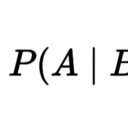Science of the Total Environment 2019-Aug
Particulate air pollution and ischemic stroke hospitalization: How the associations vary by constituents in Shanghai, China.
Зөвхөн бүртгэлтэй хэрэглэгчид л нийтлэл орчуулах боломжтой
Нэвтрэх / Бүртгүүлэх
Холбоосыг санах ойд хадгалдаг
Түлхүүр үгс
Хураангуй
BACKGROUND
The identification of constituents of fine particulate matter (PM2.5) air pollution that had key impacts of ischemic stroke (the predominant subtype of stroke) is important to understand the underlying biological mechanisms and develop air pollution control policies.OBJECTIVES
To explore the associations between PM2.5 constituents and hospitalization for ischemic stroke in Shanghai, China.METHODS
We conducted a time-series study to explore the associations between 27 constituents of PM2.5 and hospitalization for ischemic stroke in Shanghai, China from 2014 to 2016. The over-dispersed generalized additive models with adjustment for time, day of week, holidays, and weather conditions were used to estimate the associations. We also evaluated the robustness of the effect estimates for each constituent after adjusting for the confounding effects of PM2.5 total mass and gaseous pollutants and the collinearity (the residual) between this constituent and PM2.5 total mass. We also compared the associations between seasons.RESULTS
In total, we identified 4186 ischemic stroke hospitalizations during the study period. The associations of ischemic stroke were consistently significant with elemental carbon and several elemental constituents (Chromium, Iron, Copper, Zinc, Arsenic, Selenium, and Lead) at lag 1 day in single-constituent models, models adjusting for PM2.5 total mass or gaseous pollutants and models adjusting for collinearity. The associations were much stronger in cool season than in warm season.CONCLUSIONS
The current study provides suggestive evidence that elemental carbon and some metallic elements may be mainly responsible for the risks of ischemic stroke hospitalization induced by short-term PM2.5 exposure.


